Install LibreELEC on Raspberry Pi to Replace Your Smart TV OS
Don’t like ads on your smart TV? This tutorial is going to show you how to replace your TV OS with LibreELEC (Embedded Linux Entertainment Center) and a Raspberry Pi. LibreELEC is a free open-source Linux distribution for embedded devices used as home media centers. It is a fork of the now-discontinued OpenELEC project, which itself is based on Kodi. After installing LibreELEC on a Rasberry Pi, you can download Movies, TV shows on Usenet, or torrent.
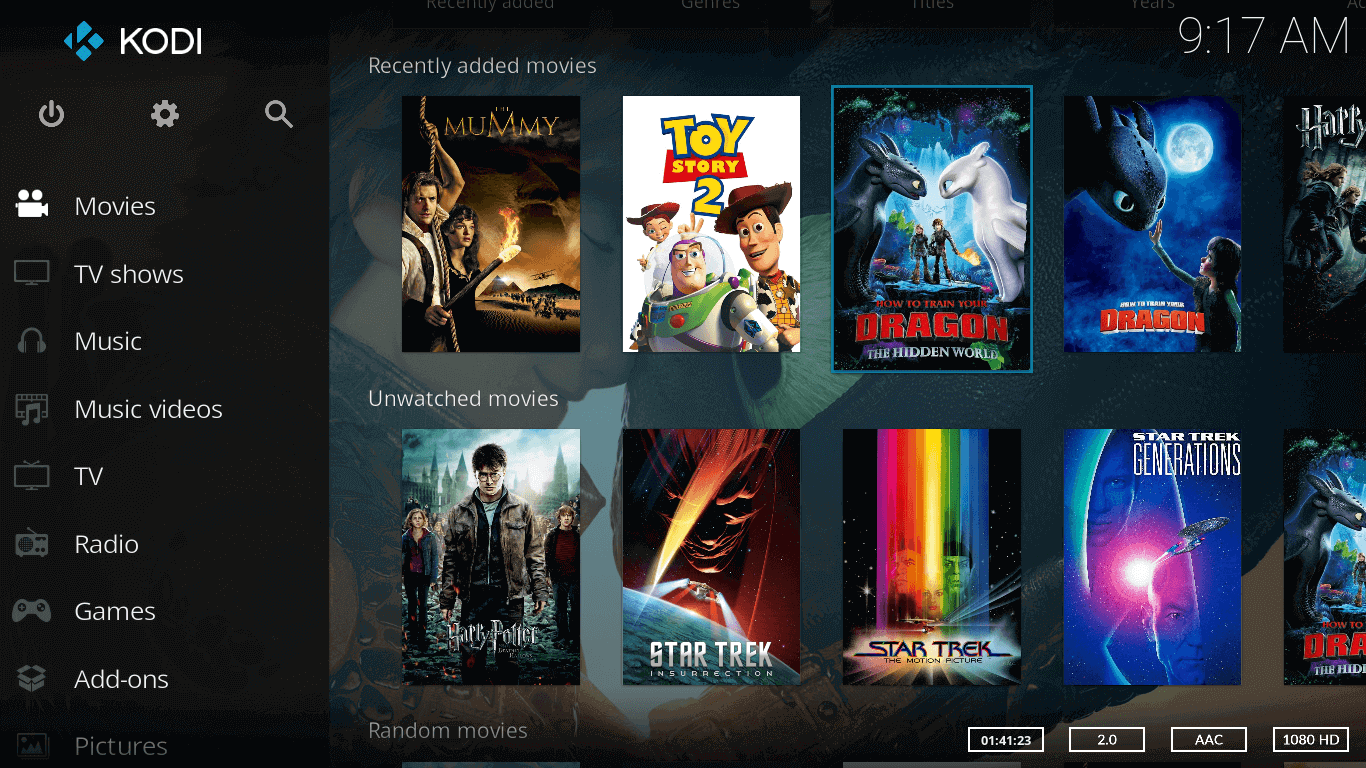
LibreELEC Features
- Super lightweight, as it includes only the necessary software to run a Kodi media center (Just enough OS for Kodi).
- Fast booting.
- Support all versions of Rasberry Pi (Versions 0 / 1 / 2 / 3 / 4, including B and B+ variants ).
- Optimized to be used with flash-based drives, like compact flash, USB drives, or SSD.
- Includes all features that Kodi has to offer.
What you need
- A Rasberry Pi starter kit, which includes SD card for installing LibreELEC, SD card reader, HDMI cable, system fan, power supply and Rasberry Pi case.
- Ethernet cable (optional if your Raspberry Pi has a built-in wireless card), so your Pi can connect to a router.
- A TV with HDMI port
- USB remote control. (You can use the Sybu Kodi app on iOS or the Kore app on Android to control Kodi, but a remote control with USB receiver is more convenient.)
Don’t have a TV? You can choose to buy a smart TV or non-smart TV. For those who don’t want any proprietary software, you might want to choose non-smart TV. (My smart TV can still show ads at boot time, even if I configure the TV to boot directly into LibreELEC.) Smart TV has built-in OS that you can’t uninstall, unless you are a super geek and you don’t mind spending weeks troublshooting problems.
Note that the old Rasberry Pi 1 (single-core, 512MB RAM) isn’t powerful enough to provide a smooth TV-watching experience. When scanning media libraries, CPU usage goes up to 100% and videos can’t be played. It’s recommended to use the latest Raspberry Pi 4B if you don’t have one.
Once you have all the required items, let’s get started.
Step 1: Install LibreELEC on Raspberry Pi
Go to LibreELEC download page to download the LibreELEC USB-SD Creator app. I use Ubuntu, so I download the Linux 64-bit version.
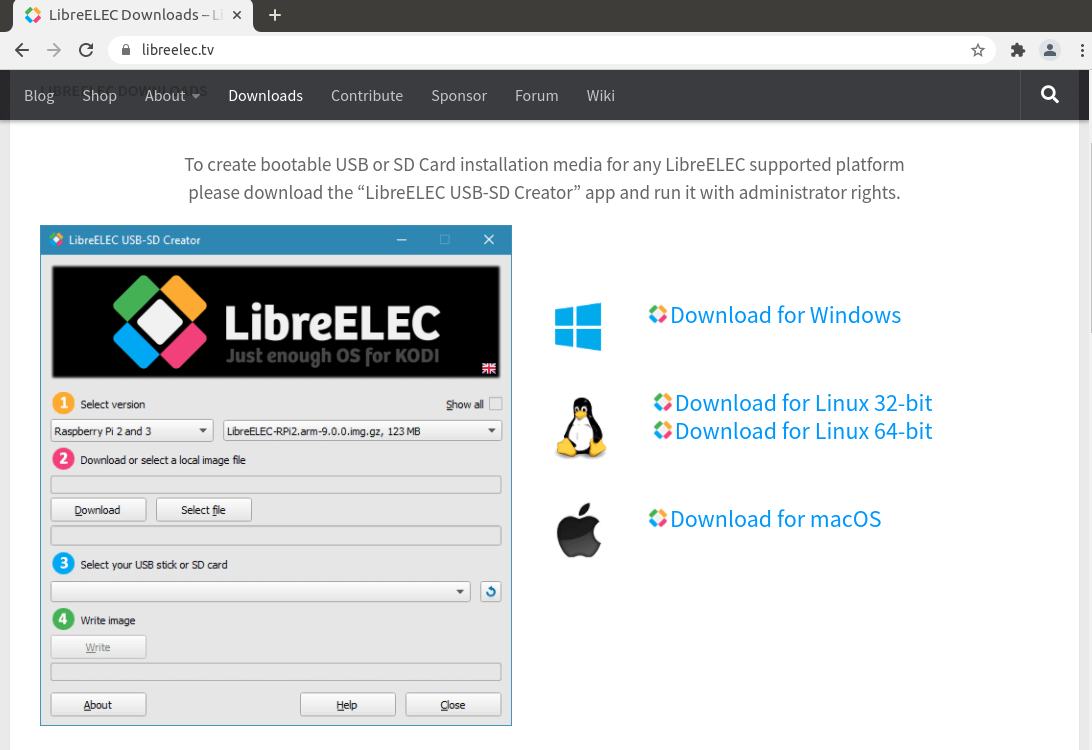
Once it’s downloaded, open up a terminal window and go to the download destination folder. For example, the file is downloaded to the Downloads folder under my home directory, so I use the following command.
cd ~/Downloads
Then make the file executable.
chmod +x LibreELEC.USB-SD.Creator.Linux-64bit.bin
And run it with sudo priviledge.
sudo ./LibreELEC.USB-SD.Creator.Linux-64bit.bin

In the creator app, select the version of your Rasberrry Pi, download the image file. Insert your SD card to your computer, then select it in the app. All data on the SD card will be wiped out. Make sure you select the right device.
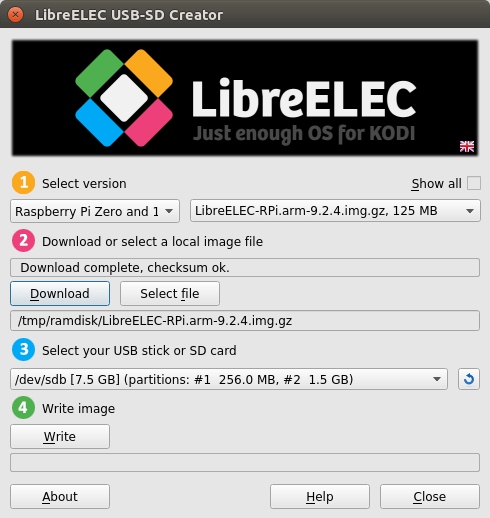
Click the write button to write the LibreELEC image to your Rasberry Pi. Once its done, close the app and unplug your SD card from your computer.
Step 2: The Initial Run
Insert SD card to your Raspberry Pi and start it. Since Rasberry Pi uses an HDMI cable to connect to your TV, you need to configure your TV to use the HDMI signal source, in order to display LibreELEC on your screen.

To control your LibreELEC screen, you can connect a keyboard to your Rasberry Pi, or download the Sybu Kodi app on your phone. Tap Discover Hosts in the Sybu Kodi app to find the LibreELEC host (It needs to be in the same network). Then you can use the virtual controller to interact with LibreELEC. You can also buy a remote control with USB receiver, which is more convenient.
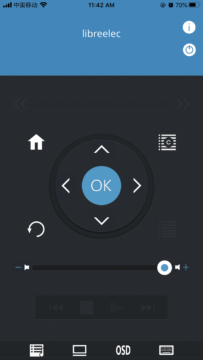
On first boot, a setup wizard will appear. First, choose your language. (If the setup wizard is stuck and you can’t go to the next step, reboot your Rasberry Pi.)
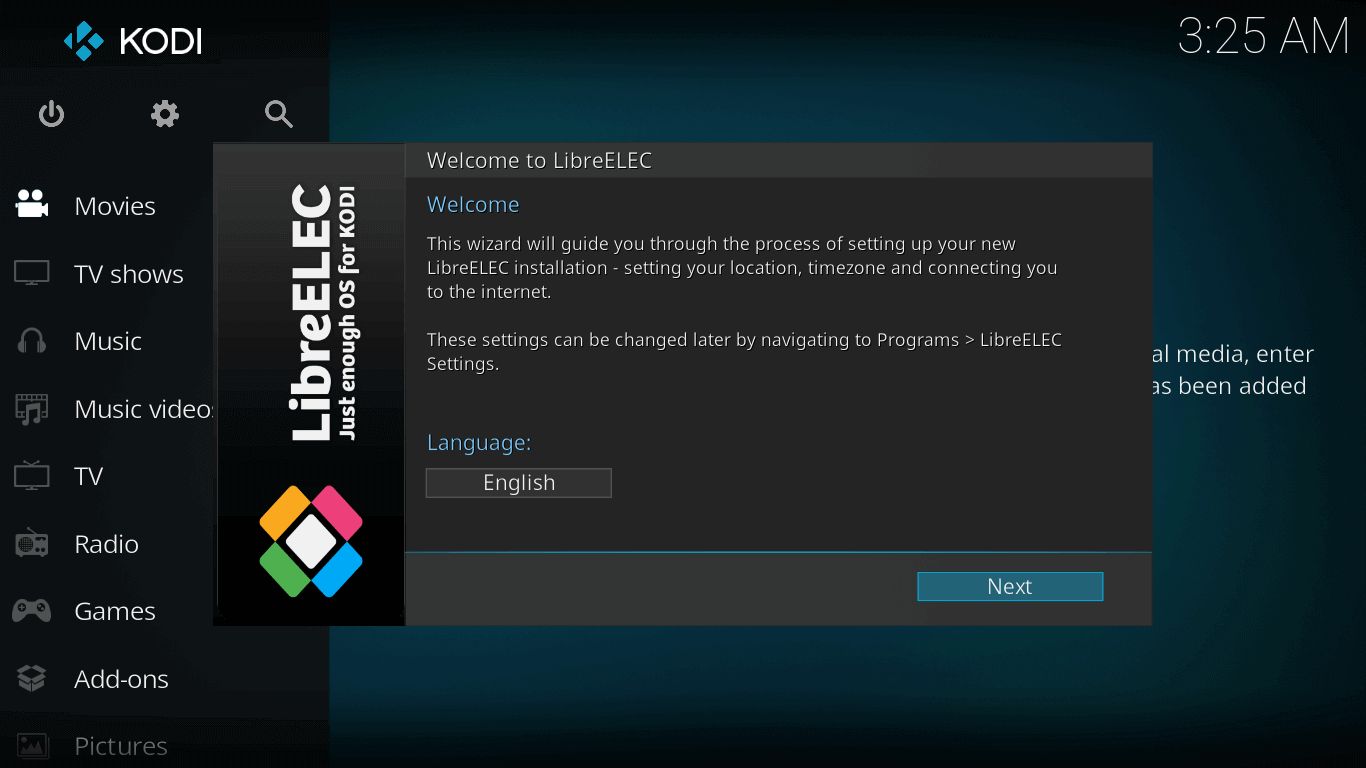
Then give it a hostname. I simply use the default hostname.
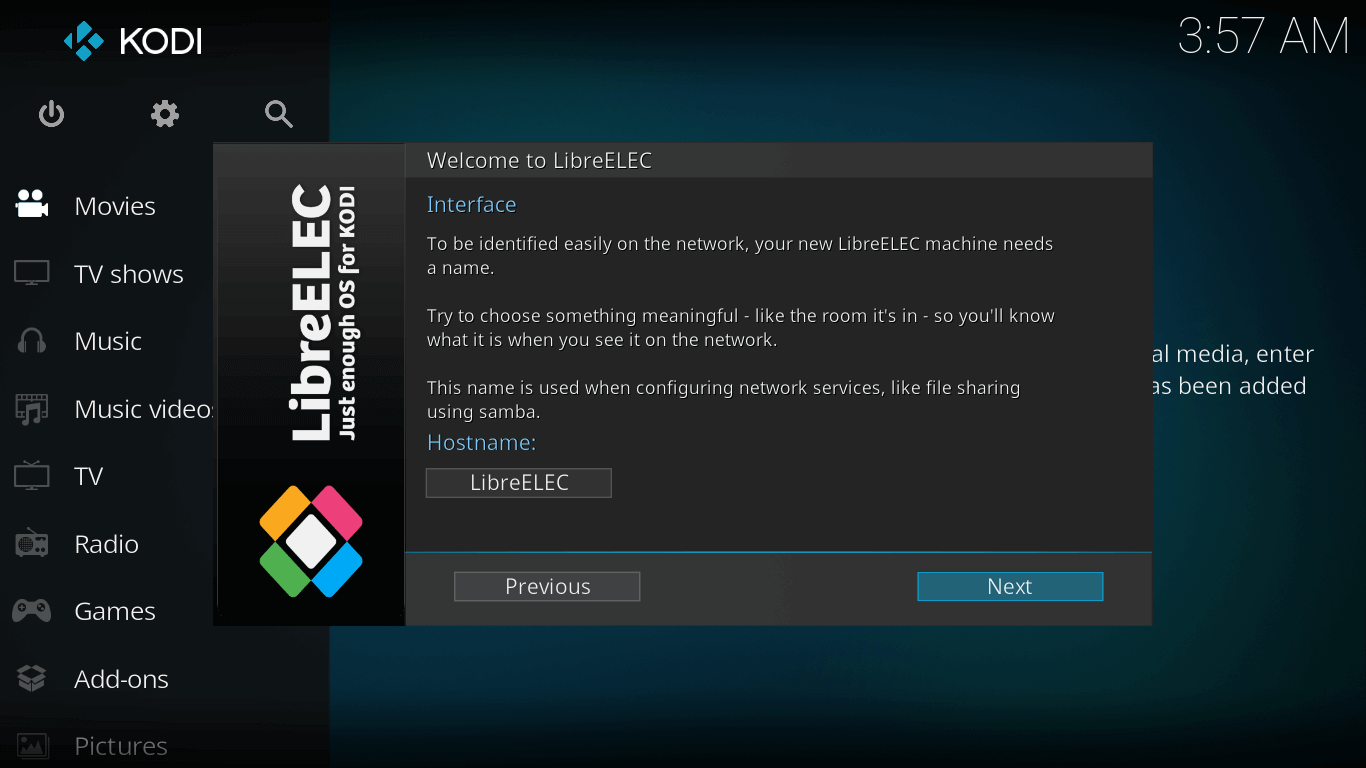
Next, configure networking. If your Rasberry Pi has a wireless card, you can connect it to your Wi-fi router.
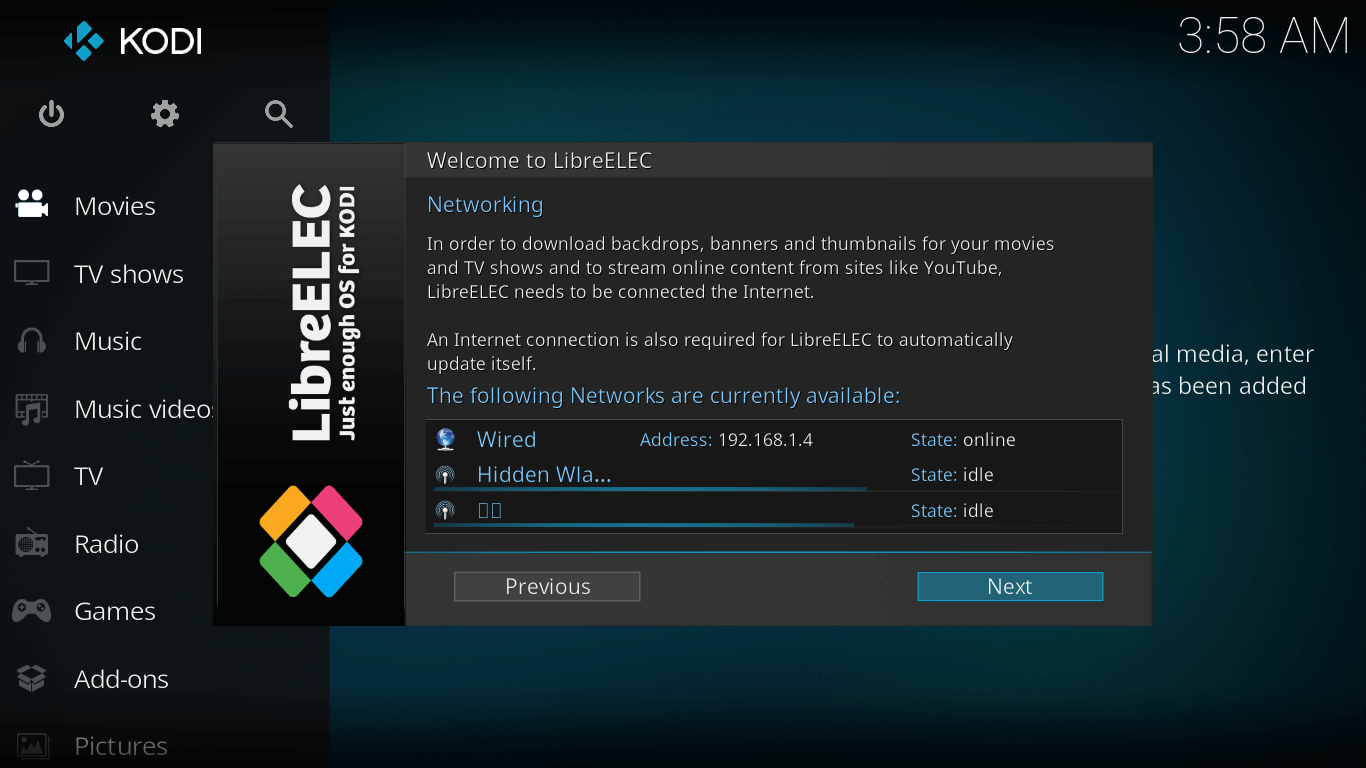
On the next screen, you can enable SSH and Samba service. The default username for SSH is root and the default password is libreelec. You can change the password in this step.
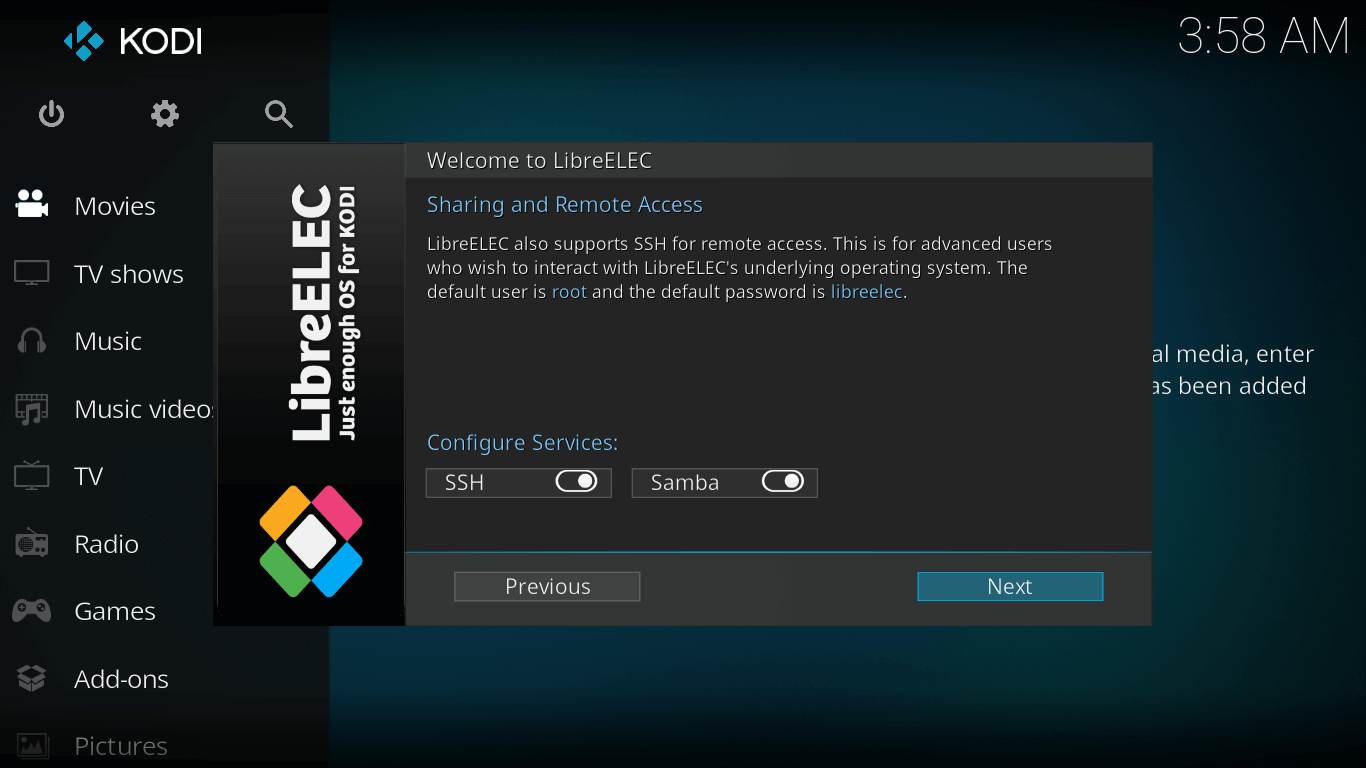
After that’s done, simply click Next and you will be able to use Kodi.
Hint: If your smart TV still boots into the built-in OS first, you can configure the TV to boot directly into the screen of the HDMI signal source. You can usually find this setting in the built-in OS.
Step 3: Setting Up Media Library
On the left sidebar, there are various content types, such as Movies, TV shows, Music, etc. Select each content type and enter files section to add a media source.
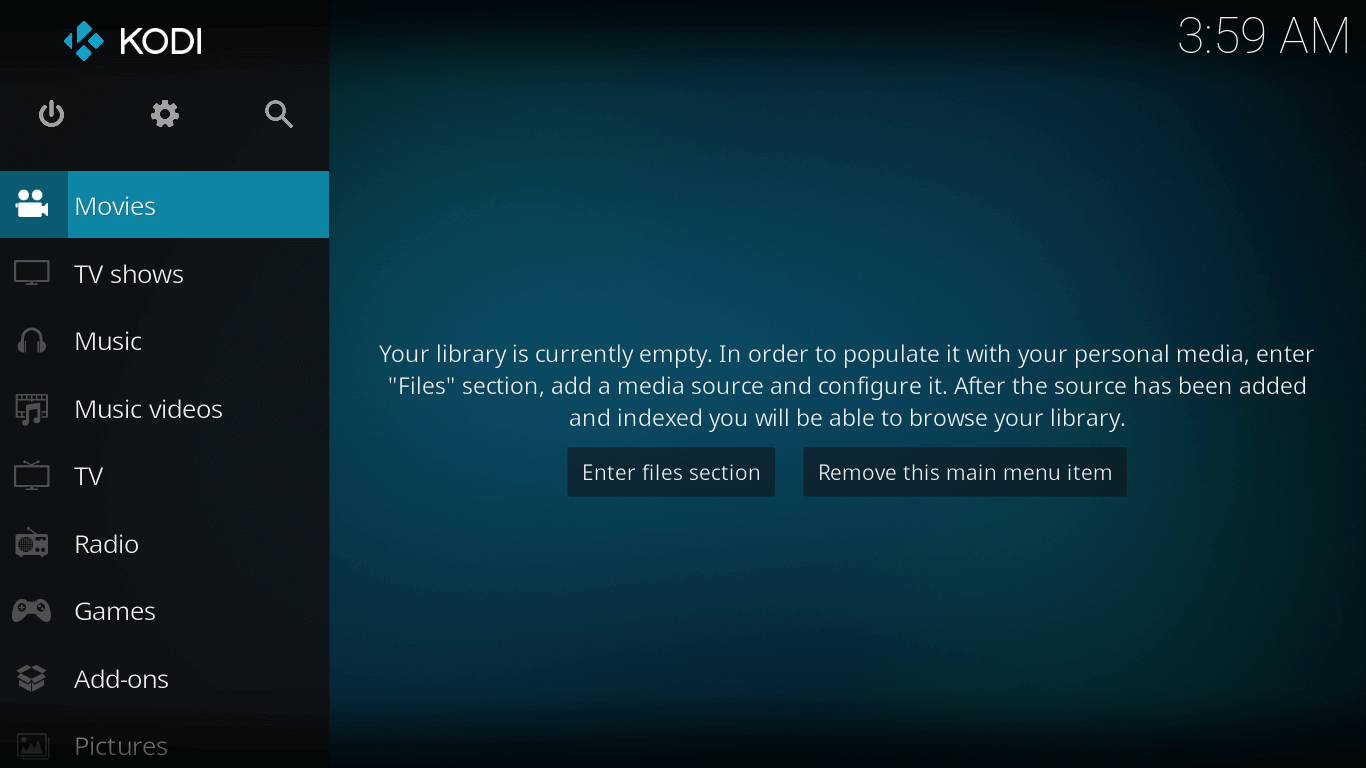
You can add media from a local hard drive or from the local network like FTP server and Samba share. When browsing folders from a local hard drive, right-click the folder name and select set content. If you use the Sybu Kodi app on the phone, then tap on the contxt menu button.
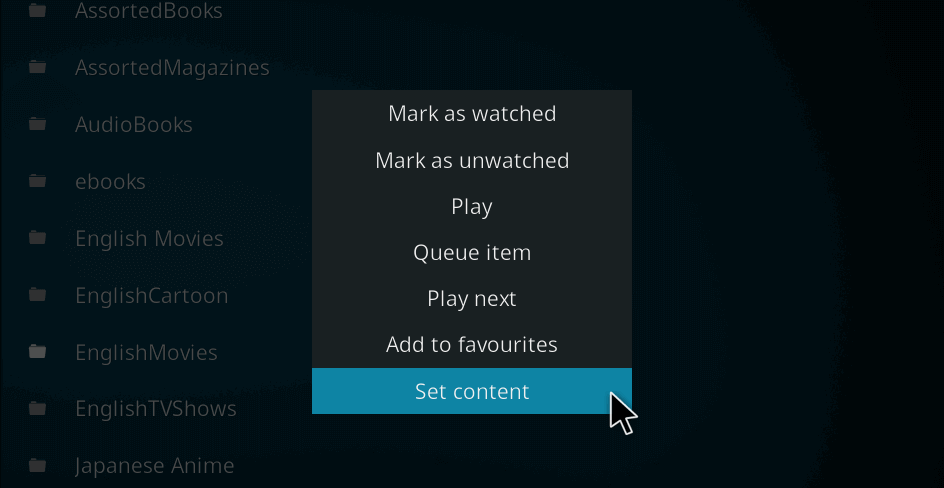
Then choose the content type and information providers. You can use the default scanning options.
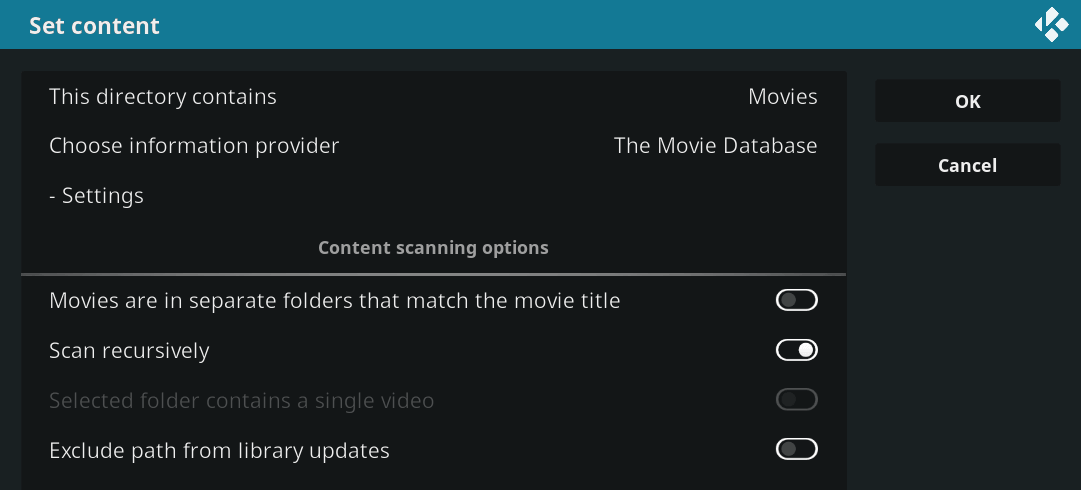
Where to Download Movie and TV Shows
- Use a BitTorrenting client like Deluge.
- Learn how to download from Usenet.
Advantages of Usenet
- It gives you better privacy because connections are encrypted with TLS. You won’t connect to another peer, so others can’t see what you are downloading.
- Superfast download speed.
- Files on Usenet are usually kept much longer than torrent files. For example, Newsdemon stores files for 4430 days (more than 12 years), so you can download old content at very fast speed.
After adding media sources, you probably want to change three settings in Kodi.
- Go to Settings -> Media -> Library, then enable update library on startup for both video library and music library.
- Go to Settings -> Media -> Video, then enable extract thumbnails from video files and Show movie sets.
- Go to Settings -> System -> Power Saving, enable put display to sleep when idle.
Step 4: Install YouTube, Netflix, Hulu, and other Popular Add-ons
Go to Settings -> Add-ons -> Install from repository -> All repositories. There are many add-ons in the repository, such as subtitle add-on, the movie database add-on, etc. You will find YouTube in the video add-on category.
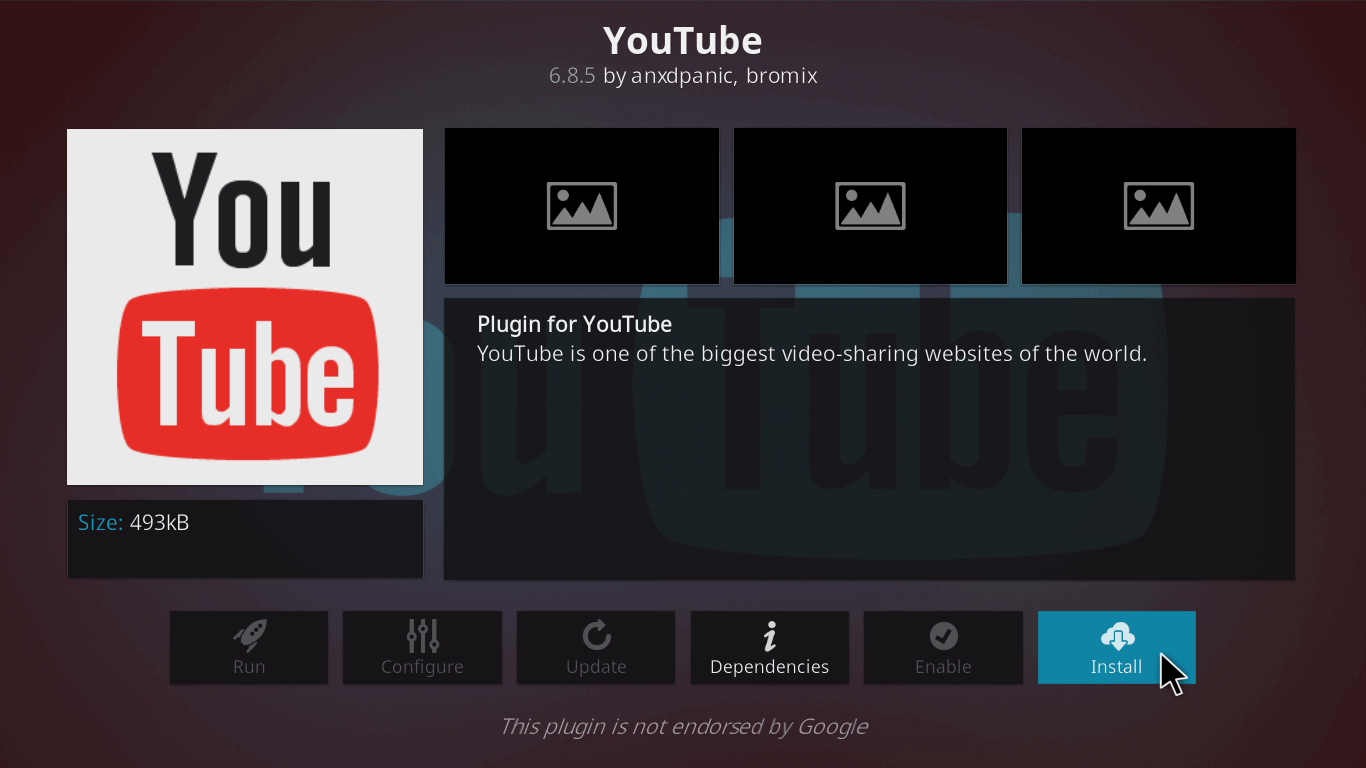
Once YouTube add-on is installed, the setup wizard will appear. Select Yes to execute the setup wizard.
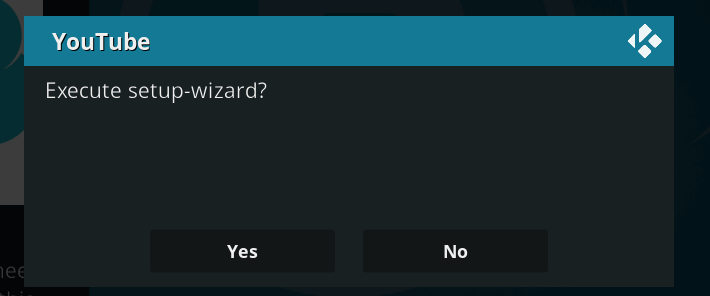
If you need to use another language or region, select Yes to choose.
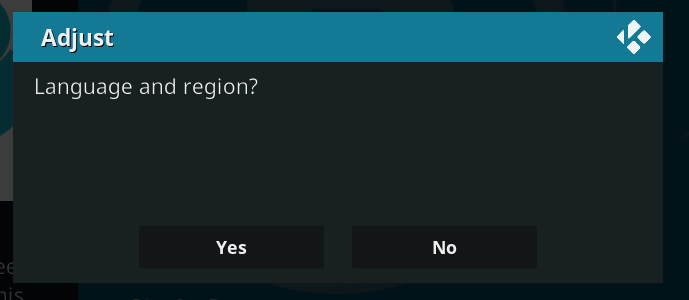
You also have the option to enable geolocation.
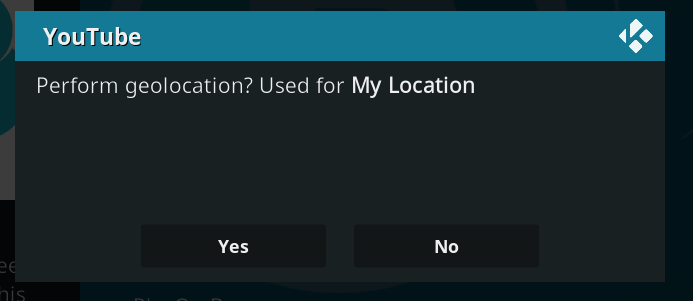
Then, go back to the Kodi home screen, select Add-ons from the left sidebar, and choose the YouTube add-on. Before using this add-on, you need to enter your YouTube API key. The process is a bit complicated, you can read the following tutorial to set it up.
Configure Proxy
If YouTube is blocked in your country or area, you can set up proxy to unblock it. Go to Settings -> System -> Internet Access, you will be able configure proxy. There are several proxy types to choose from. I’m using SOCKS5 proxy.
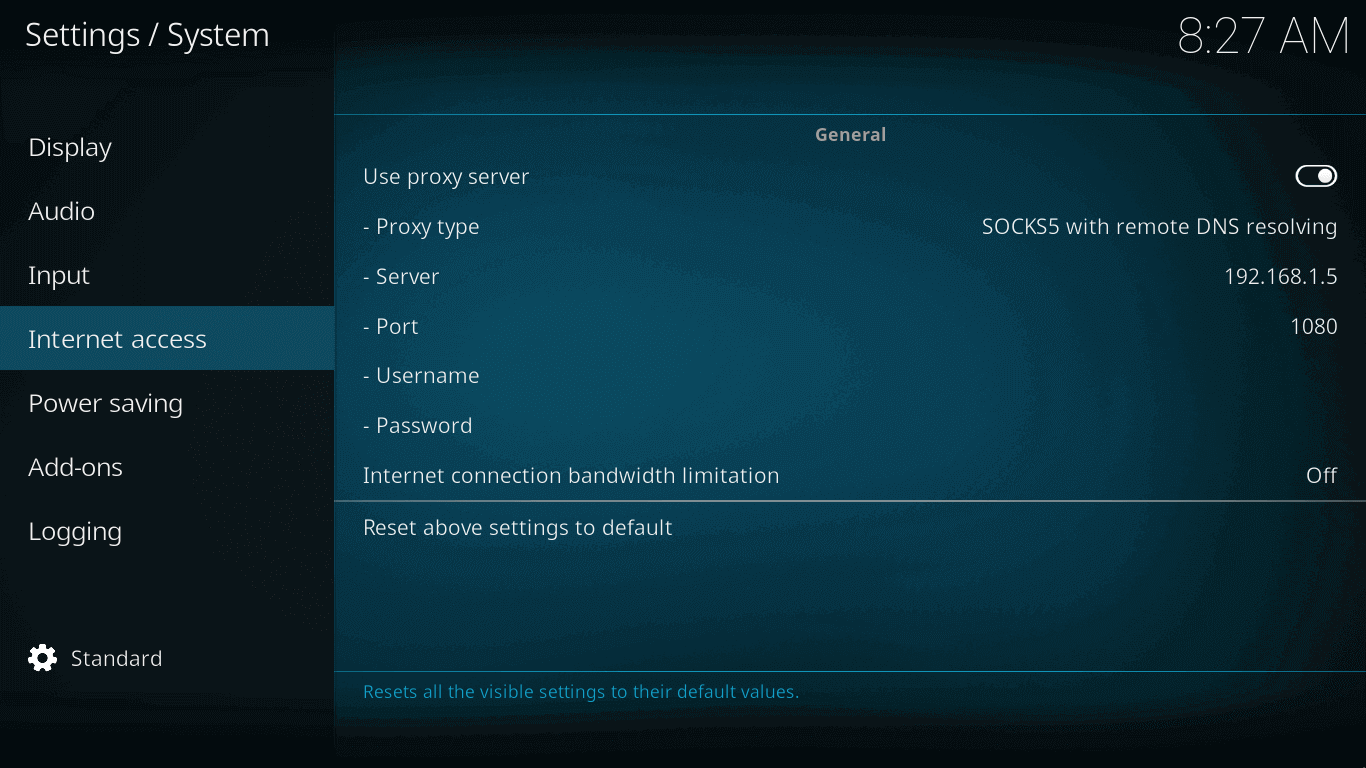
My TV in the Sitting Room
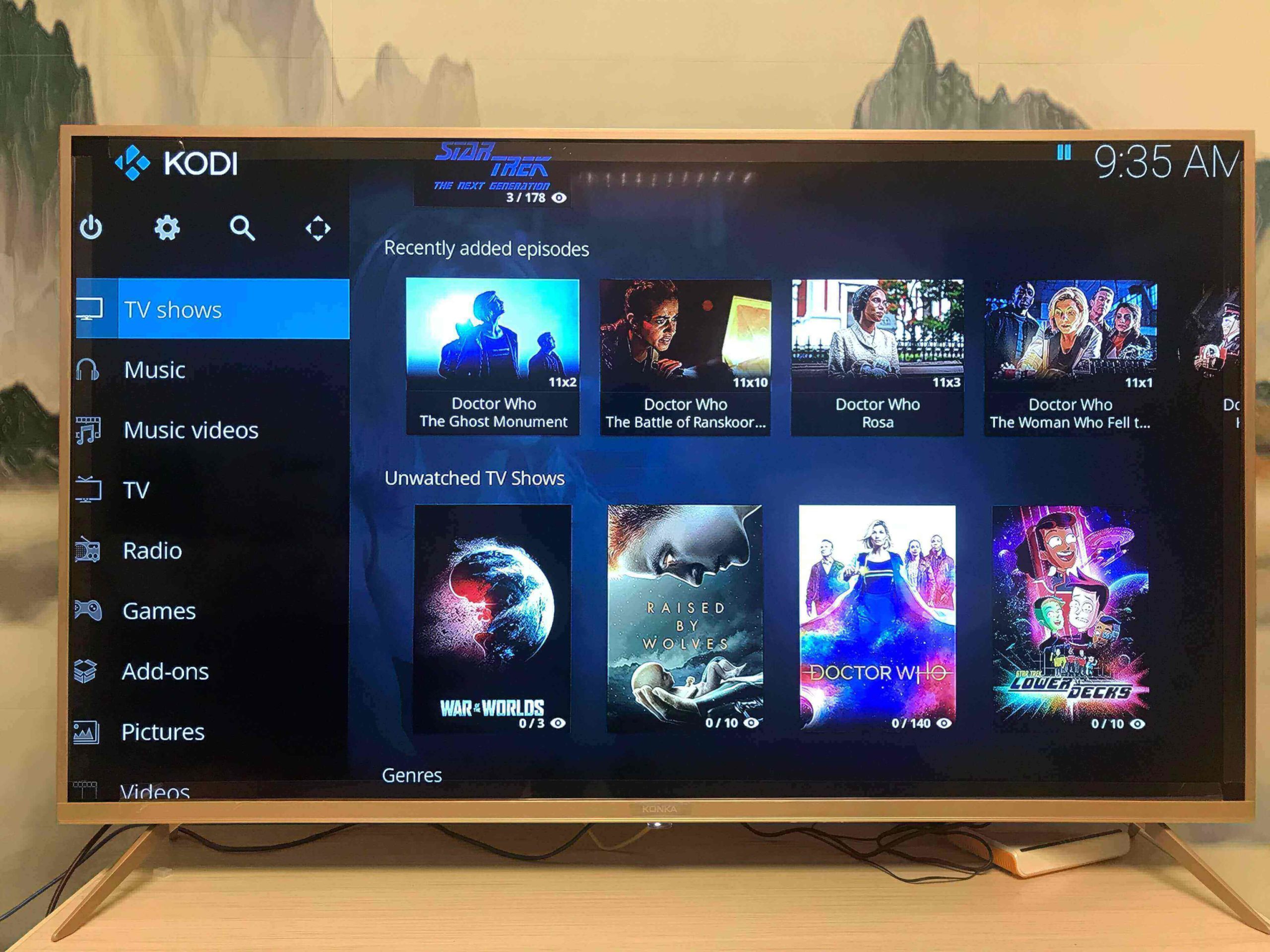
Display Non-Latin Characters
By default, Kodi can’t show non-latin characters like Chinese, Japanese and Korean. To fix it, go to Settings -> Interface -> Skin, change fonts from skin default to Arial-based.
Can’t Mount Your External HDD?
When you connect an external HDD to your Rasberry Pi, LibreELEC automatically mounts the HDD under /var/media/ directory, and you can select folders on this hard drive in the Kodi interface.
Note that if your Rasberry Pi is very old, like the Rasberry Pi 1, then it might not be able to power an external HDD via the USB ports. How do you know there’s no power to your external HDD?
- The HDD light is blinking fast.
- You can’t hear any sound of disk spinning in your HDD.
You can also run the following command on your Rasberry Pi.
lsusb
Normally you would see the name of the HDD manufacturer such as Seagate or Western Digital in the output.

If there’s no power to the HDD, you won’t find the manufacturer’s name. If that’s the case, I recommend buying the latest Rasberry Pi 4B as your media center. Also, Rasberrry Pi can power only one external HDD via the USB ports. If you have multiple HDDs, you should buy a powered USB hub.
You can also try adding the following lines at the end of the /boot/config.txt file.
max_usb_current=1
Then reboot your Raspberry Pi.
sudo shutdown -r now
This will make Raspberry Pi allocate more voltage to the USB ports, so it might be able to power your external HDD.
Monitor CPU Temperature
Raspberry Pi is designed to run at 0~50 Celsius at low system load. It’s a good practice to keep the CPU temperature under 60 Celsius, so it will have a longer life span. The hard temperature limit is 85 Celsius. You can go to Kodi Settings -> System Info to check the CPU temperature.
If you install a fan to your Raspberry Pi, the CPU temperature will be much lower. I did a test, my CPU temperature went from 53.6 Celsius to 30 Celsius after installing a fan.
- In the winter, it’s about 30 Celsius when not playing videos and 36 Celsius when playing videos.
- In the summer, it’s about 40 Celsius when not playing videos and 46 Celsius when playing videos.
Note that you need to use the correct GPIO pins when installing the fan. Please consult the installation manual that is included in your Raspberry Pi. Also, be careful with the direction of the fan blade. They should produce winds to the CPU, not the other way around. If you take a look at a typical electric fan at your home, I think you will know what I mean.
Raspberry Pi doesn’t boot?
It might be that your SD card isn’t connected properly to your Pi.
Kodi Unresponsive?
If you turn on the TV and Kodi is unresponsive, it might be that your SD card is full. You can restart Raspberry Pi to solve this problem, but you should clean up the SD card space.
Another interesting findings I have is that the Kore app on Android can wake up Kodi, but the SYBU app on iOS can not.
Wrapping Up
I hope this tutorial helped you install LibreELEC on Raspberry Pi to replace your smart TV OS. As always, if you found this post useful, then subscribe to our free newsletter to get more tips and tricks. Take care 🙂



I have been using libreelec for years. Kodi got me interested in computers and I highly suggest an install. Great place to start learning. the kodi forum, reddit addons4kodi, and github have amazing support. the youtube addon will need a developer account and an api setup for it to work. you can find instructions at the kodi forum.
there are so many great features, skins and addons. I love kodi. ☆☆☆☆☆
I just got an odriod N2 4g for my new kodi box today. replaced an Intel nuc which will become a Jellyfin server, using LinuxBabe instructions of course. I purchase emby premium and hate that in 2018 they sold out, time to switch if you still run it. Jellyfin also has a kodi app.
On my Odriod N2 I plan to install Coreelec, it is just like libreelec.
it looks pretty cool. I got a small lcd for the time too.
I used Plex for years, then switched to Jellyfin. The problem I had with Kodi was that it never operated in a server setup. I have 12TB of data and want to leave the material on the server, which is accessible from all my devices. Because Jellyfin has a Roku app, I can see everything through my TV, Has Kodi matured to the point it can now be used in a true server setup?
no, kodi has not matured into a server setup,yet, road map shows no plans either.
jellyfin is the way to go to share your 12tb.
kodi has more features and a great community that will help you through any issue and keeps your devise foss. try using the jellyfin kodi app. you might like it. I used the emby app before and it worked well. jellyfin forked the same code.
Roku is not foss.
Aw, too bad the Mac version doesn’t work
balena.io etcher works on osx. it creates a bootable usb or SD card. easy to use gui.
enjoy libreelec, it is amazing software. you should also get a debrid or usenet account. I also suggest a hdhomerun by silicondust.